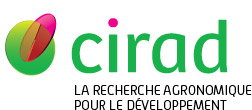Madrières Sarah, Tatard Caroline, Murri Séverine, Vulin Johann, Galan Maxime, Piry Sylvain, Pulido Coralie, Loiseau Anne, Artige Emmanuelle, Benoit Laure, Lemenager Nicolas, Lakhdar Latifa, Charbonnel Nathalie, Marianneau Philippe, Castel Guillaume. 2020. How bank vole-PUUV interactions influence the eco-evolutionary processes driving nephropathia epidemica epidemiology - An experimental and genomic approach. Pathogens, 9 (10):789, 19 p.

|
Version publiée
- Anglais
Sous licence  . .
613428.pdf Télécharger (2MB) | Prévisualisation |
Url - jeu de données - Entrepôt autre : https://doi.org/10.5281/zenodo.4049573
Quartile : Q2, Sujet : MICROBIOLOGY
Résumé : In Europe, Puumala virus (PUUV) is responsible for nephropathia epidemica (NE), a mild form of hemorrhagic fever with renal syndrome (HFRS). Despite the presence of its reservoir, the bank vole, on most of French territory, the geographic distribution of NE cases is heterogeneous and NE endemic and non-endemic areas have been reported. In this study we analyzed whether bank vole-PUUV interactions could partly shape these epidemiological differences. We performed crossed-experimental infections using wild bank voles from French endemic (Ardennes) and non-endemic (Loiret) areas and two French PUUV strains isolated from these areas. The serological response and dynamics of PUUV infection were compared between the four cross-infection combinations. Due to logistical constraints, this study was based on a small number of animals. Based on this experimental design, we saw a stronger serological response and presence of PUUV in excretory organs (bladder) in bank voles infected with the PUUV endemic strain. Moreover, the within-host viral diversity in excretory organs seemed to be higher than in other non-excretory organs for the NE endemic cross-infection but not for the NE non-endemic cross-infection. Despite the small number of rodents included, our results showed that genetically different PUUV strains and in a lesser extent their interaction with sympatric bank voles, could affect virus replication and diversity. This could impact PUUV excretion/transmission between rodents and to humans and in turn at least partly shape NE epidemiology in France.
Mots-clés Agrovoc : épidémiologie, campagnol, sérologie, transmission des maladies, Enquête pathologique, variation génétique, distribution géographique, rongeur, infection expérimentale, hantavirus, vessie
Mots-clés géographiques Agrovoc : France, Europe
Mots-clés libres : Puumala virus, Myodes glareolus, France, Experimental cross-infections, Within-host viral diversity, Transmission
Agences de financement hors UE : Institut National de la Recherche Agronomique, Agence Nationale de Sécurité Sanitaire de l'Alimentation, de l'Environnement et du Travail
Auteurs et affiliations
- Madrières Sarah, ANSES (FRA)
- Tatard Caroline, INRAE (FRA)
- Murri Séverine, ANSES (FRA)
- Vulin Johann, ANSES (FRA)
- Galan Maxime, INRAE (FRA)
- Piry Sylvain, INRAE (FRA)
- Pulido Coralie, ANSES (FRA)
- Loiseau Anne, INRAE (FRA)
- Artige Emmanuelle, INRAE (FRA)
- Benoit Laure, CIRAD-BIOS-UMR CBGP (FRA)
- Lemenager Nicolas, CIRAD-BIOS-UMR CBGP (FRA)
- Lakhdar Latifa, ANSES (FRA)
- Charbonnel Nathalie, INRAE (FRA)
- Marianneau Philippe, ANSES (FRA)
- Castel Guillaume, INRAE (FRA) - auteur correspondant
Source : Cirad-Agritrop (https://agritrop.cirad.fr/613428/)
[ Page générée et mise en cache le 2025-10-01 ]




